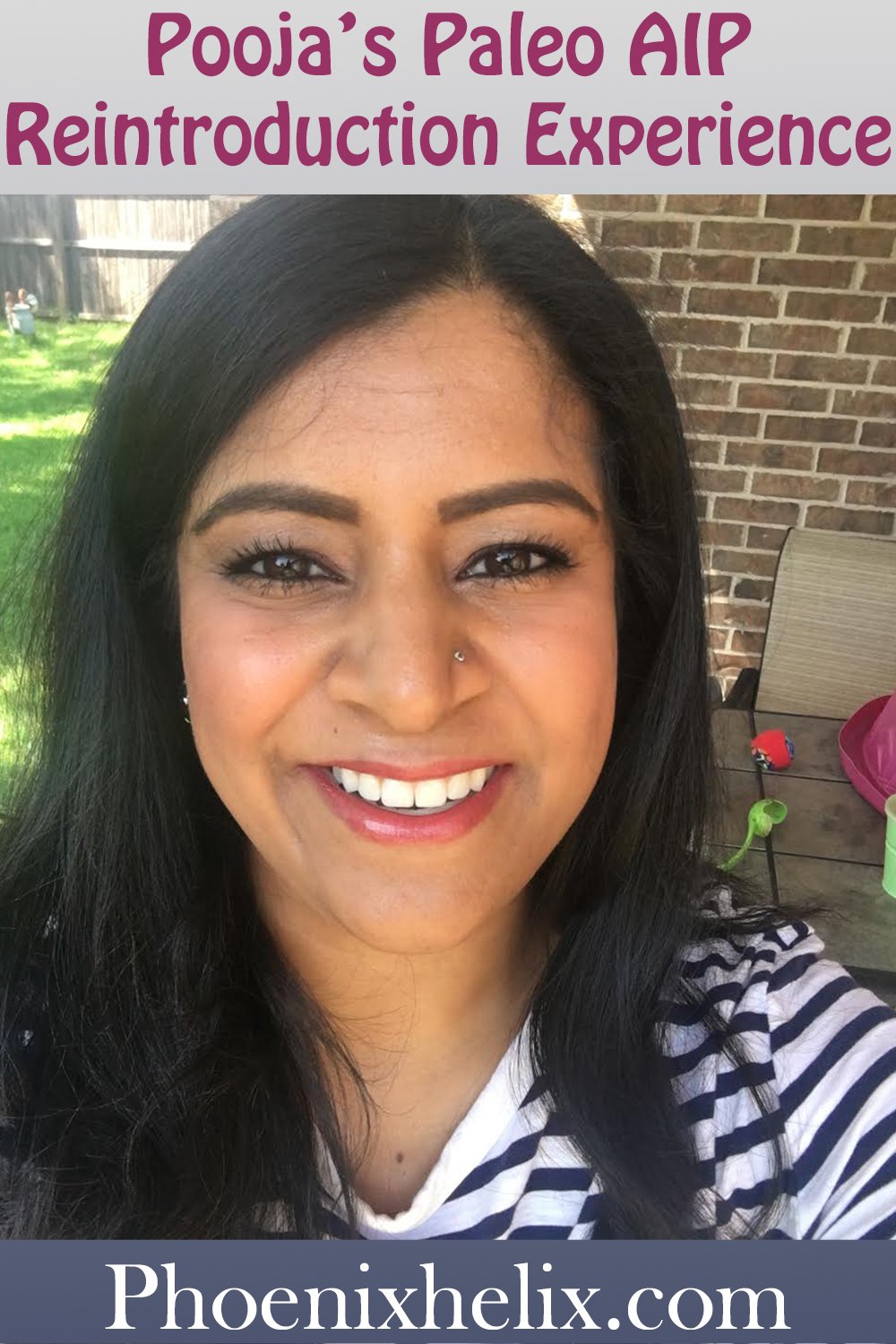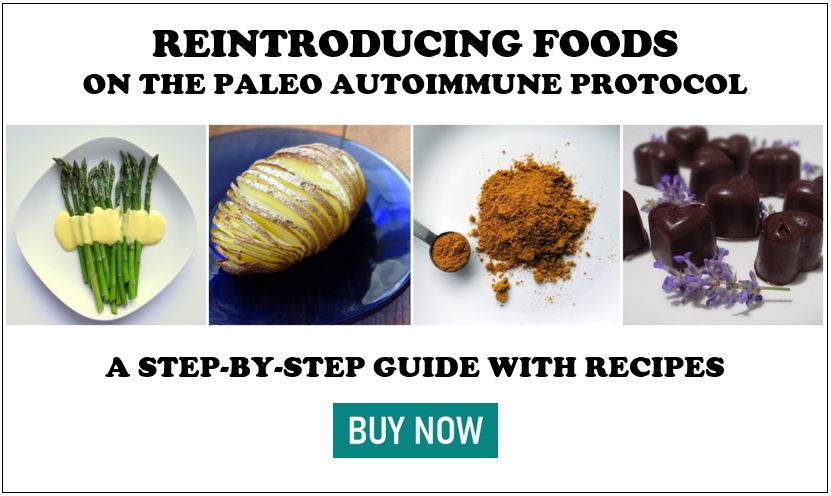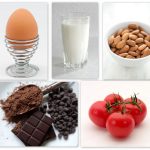“Knowing yourself is the beginning of all wisdom.”
~ Aristotle
This Interview Series
Reintroducing Foods on the Paleo Autoimmune Protocol was my first e-book, which I published back in 2014. I realized that the reintroduction process is often the trickiest part of the AIP journey. It can be confusing, overwhelming, and hard to navigate alone. I wrote the book to guide people through, and thereafter got a nickname: Reintro Goddess. (Just kidding, but wouldn’t that be a great nickname?) I’m passionate about this process for two reasons: (1) Some people make the mistake of thinking the elimination phase of the AIP is meant to last forever. It’s not. It’s just the first step. The next step is personalizing the diet for you. (2) The reintroduction process is an experiment with you at the center, where you learn to communicate clearly with your body, and it’s incredibly empowering! Everyone’s reintroduction experience is unique. I thought it would be inspiring and educational to interview people who have been through this process themselves.
Introducing Pooja Parikh
Pooja is the blogger behind AIPooja. She has hidradenitis suppurativa and the paleo autoimmune protocol has been an essential part of her healing journey. She shares AIP recipes in addition to reintroduction recipes and her mental health experiences.
- How long did you do the elimination phase? 60 days.
- How did you decide that you were ready for reintroductions? My situation was complicated because I had just come out of several major surgeries to manage my disease and ultimately save my life. Because of the major surgeries, my body was in recovery mode when I started the elimination phase and I didn’t have any active flares. I decided to do 60 days based on the preliminary research I had done before starting. When the 60 days were up, I began reintroductions.
- What foods have you been able to successfully reintroduce? Seed-based spices, seeds, eggs, nuts (on occasion, usually in the form of nut butter which is easier for me to digest), legumes in pods like green beans or sugar snap peas, ghee, occasionally high quality dairy, some grains and legumes on occasion, and occasionally small amounts of alcohol.
- Which ones can you eat regularly and which ones just occasionally? How did you discern the difference? I can eat eggs, seed-based spices, seeds, legumes in pods, nut butters, and ghee regularly with no issues. Whole nuts, other legumes like beans or soy, dairy, grains, and alcohol are all occasional foods for me because I’ve noticed that they upset my digestion. Whereas the others do not affect my autoimmune issues or digestion in a negative way.
- When food reintroductions failed, what were your symptoms? Nightshades directly impact autoimmune flares for me. If I consume nightshades of any amount in any form, I will develop a new lesion within 48-72 hours. Nightshades also affect the skin on my face, leading to breakouts there as well. Gluten doesn’t make my autoimmune symptoms worse, but it does exacerbate my IBS symptoms, and it actually makes me feel sick to my stomach.
- Did any reintroduction failures later become successes? No, I anticipate that nightshades and gluten will not ever be reintroduced back into my diet.
- Have you reintroduced any non-paleo foods? If yes, which ones and how often do you eat them? I’ve reintroduced grains, legumes, and dairy! I do well with small amounts of all three – especially grassfed cheese or yogurt, and white rice. I occasionally consume alcohol, but not regularly because it makes me feel nauseated and thus isn’t worth it for me.
- Is there any food you’d never reintroduce? Nightshades and gluten! I briefly tried both (separately) with disastrous results. Those are not worth it for me.
- What affects your food tolerance? I’ve noticed that stress affects my food tolerance, as does my menstrual cycle. I try to manage my stress by being intentional about self-care, like reading, spending time outside, meditating, playing with my dog, as well as being intentional about eating foods that serve me (mostly nightshade-free vegetables, higher quality meat, and fruit). When I am flaring, I try to remove non-paleo foods from my diet, just to give my body a break. I don’t notice that my flares get worse when I have grains or legumes; but because they don’t make me feel my best, I try to avoid them so as to not overload the physical burden on my body. I always tend to flare around my menstrual cycle, and I notice that eliminating grains and legumes helps ease my digestive stress when menstruating.
- Have you ever done an AIP reset (where you did the elimination phase over again)? If yes, what was the motivation, and did you find it helpful? I’ve done several AIP resets, and I have found them to be very helpful. If I feel like I am flaring too often or too severely, or notice other signs of inflammation in my body (like more allergic responses to my environment, topical allergies, random rashes, etc), I will plan for an AIP reset. I also plan for AIP resets when I have to have surgery because it helps set me up for greatest healing success.
- Are there any foods allowed on the AIP that you discovered you don’t tolerate? For a while, I did not do very well with coconut, especially in the form of coconut milk. I eliminated it and worked to heal my gut and continued with AIP without coconut milk. I waited for a few months to reintroduce coconut milk, and I’m glad I did because I do great with it now.
- What was the hardest part for you about the reintroduction process? The hardest part about it for me was the fear of flaring. You wish you could have all successful reintroductions, but ultimately you feel like a ticking time bomb when you’re reintroducing because you are afraid that every food might make you flare. Fortunately, I had a feeling deep in my gut that nightshades were my main antagonist, so I waited to reintroduce them in any form until the very end of the reintroduction process. I tried tiny amounts and flared each time, with each form of each nightshade I tried. I’ve accepted that they may never be in the cards for me. And that’s okay.
- What’s your advice for people contemplating reintros, or just starting their own reintroduction journey? My advice is to trust yourself and your understanding of your own body. I had a gut feeling that nightshades were my main food trigger, and I was right. If you do experience autoimmune symptoms during reintroductions, trust that you have put in the work to help your body heal, hopefully in a way that promotes faster healing from a food-related flare. Trust the process and don’t eat too much of something at first. It’s tempting, but you don’t want to overwhelm your body. Finally, trust your ability to identify imbalances within your body. If you try a food and don’t flare but can tell that it’s not agreeing with your body in other ways, trust that you have learned enough about your body, and LISTEN to your body when it is trying to communicate with you.
One Last Word of Advice
Each person’s food reintroductions are unique, so don’t expect your results to be the same as above, even if you share the diagnosis. It’s fun to learn about each other’s experiences and be encouraged by them, but this is all about learning to listen to your own body. Use the resources below to learn how to do the reintroduction process yourself.
Paleo AIP Reintroduction Resources










